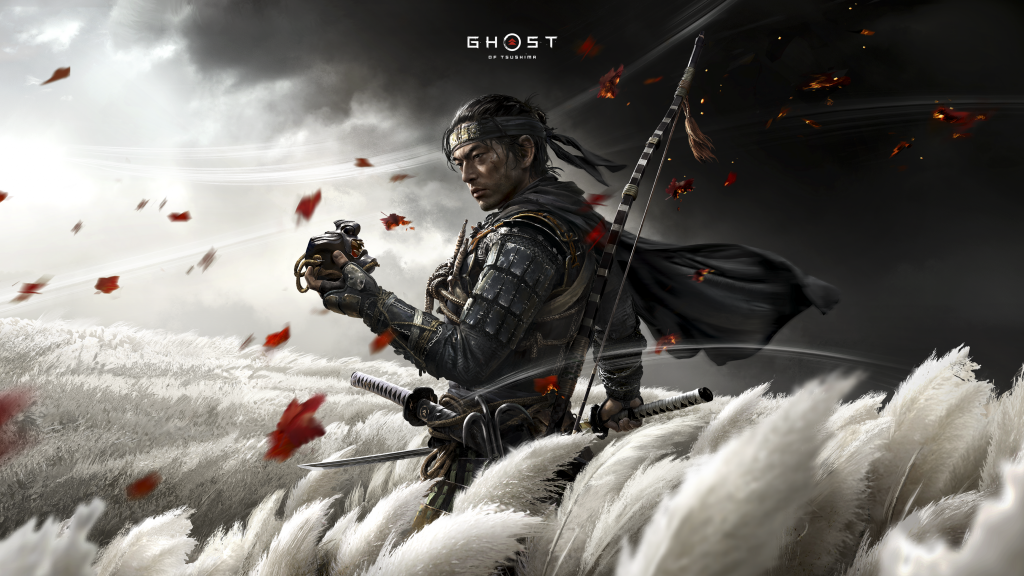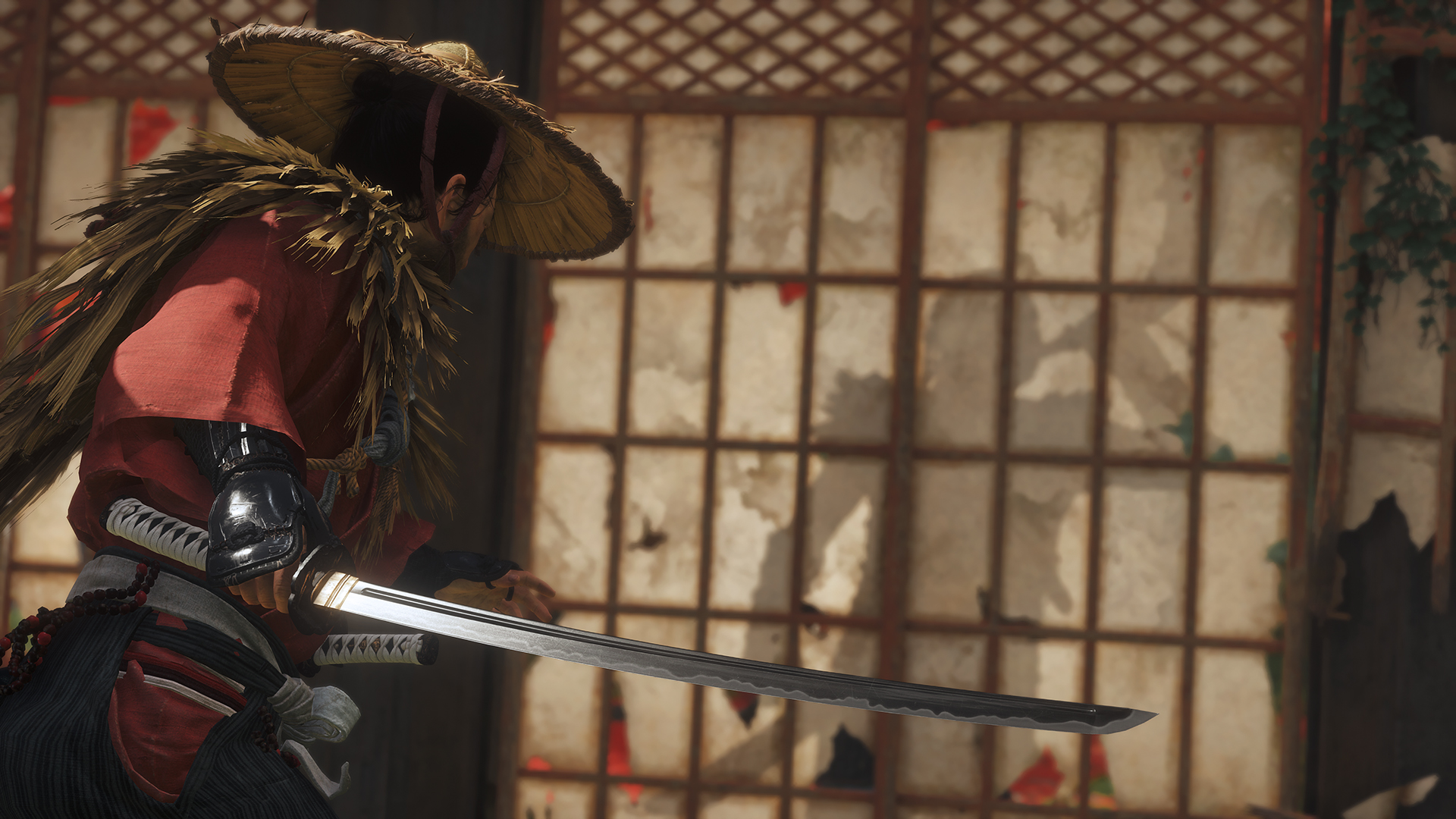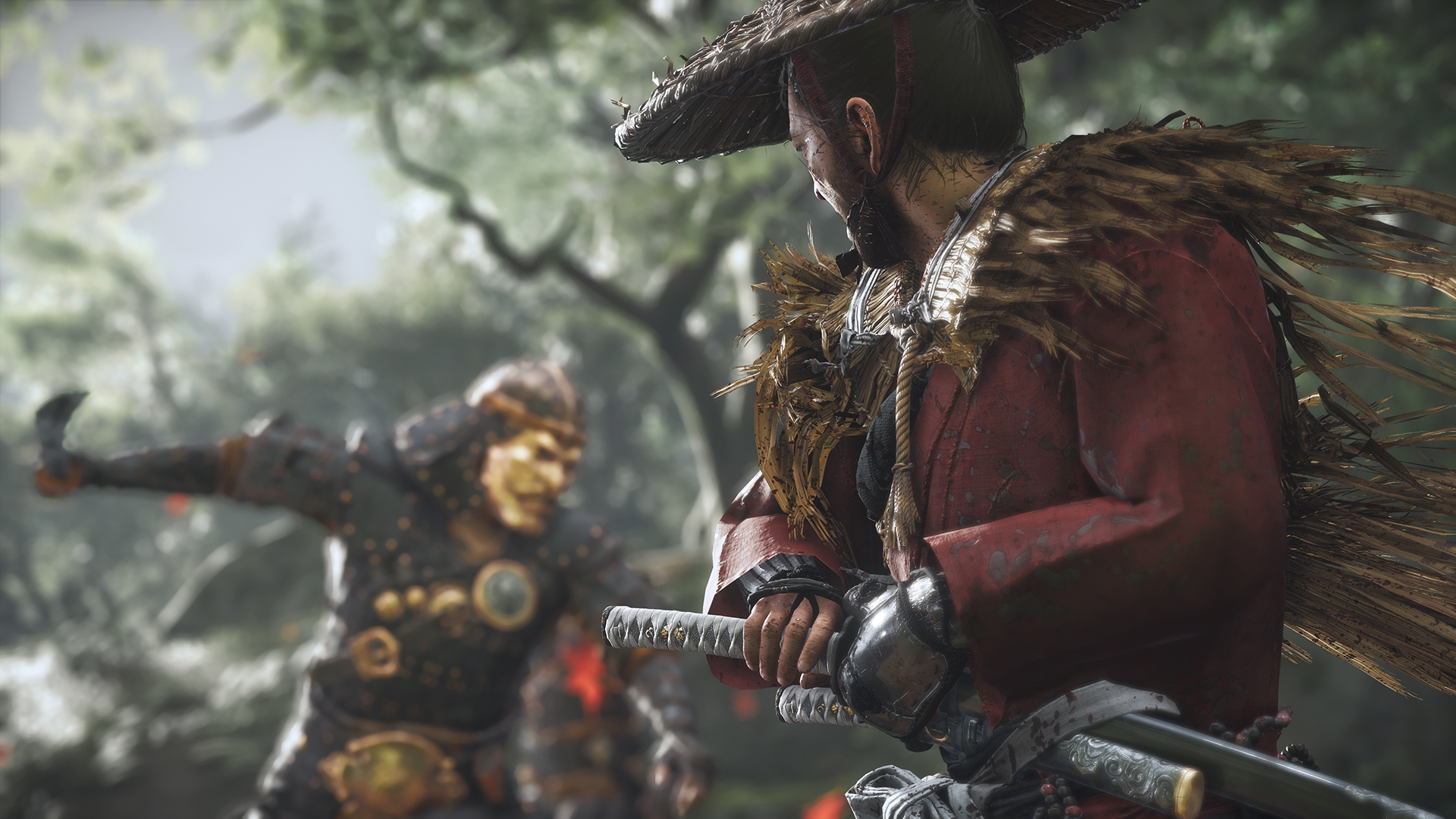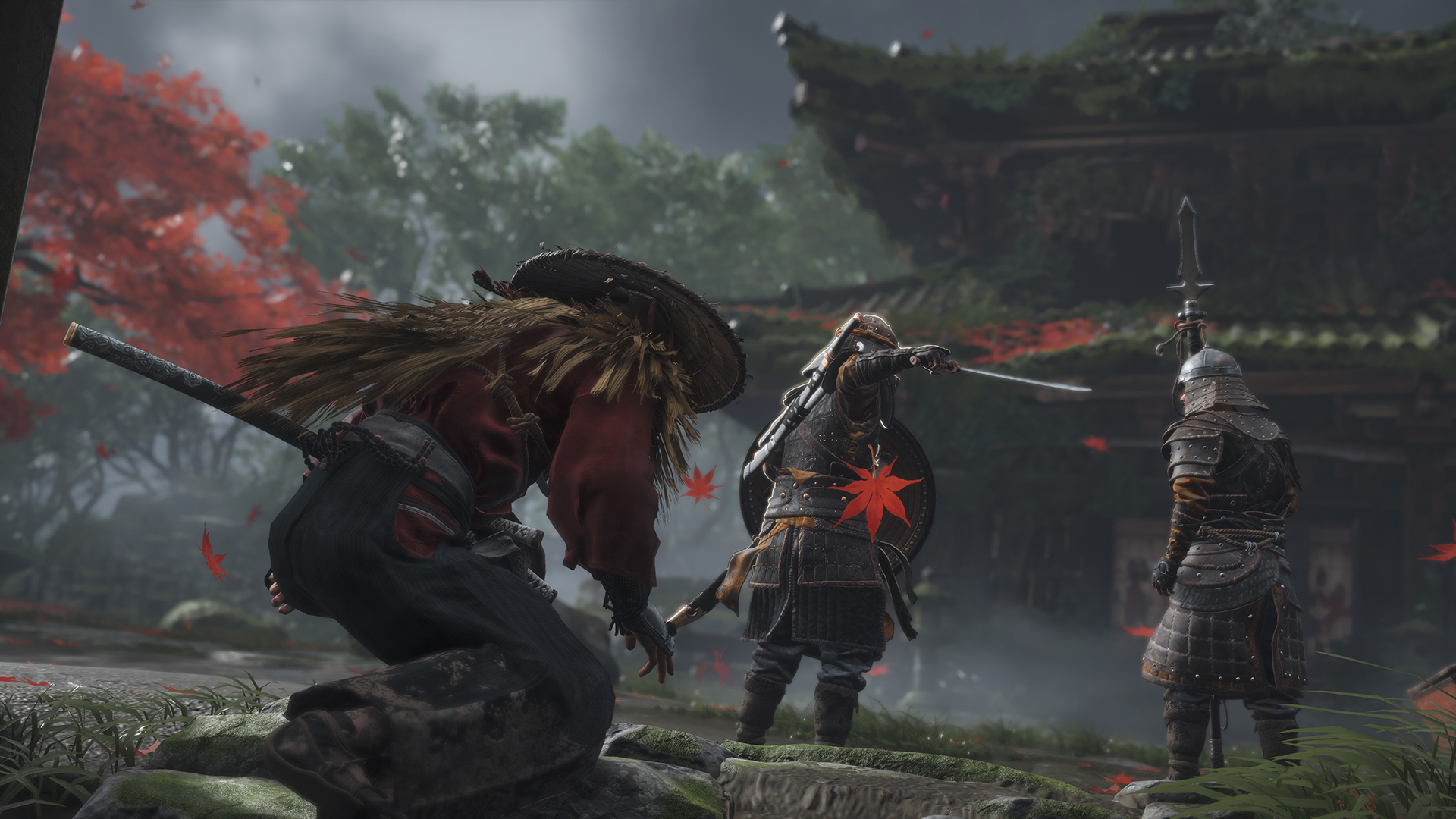Ghost of Tsushima is a brand new IP from developer Sucker Punch, best known for the Sly Cooper and Infamous series. A significant pivot from cartoon raccoons and wisecracking superheroes, Ghost of Tsushima is instead set during the first Mongol invasion of Japan in the late 13th century. You play as Jin Sakai, one of the few samurai to survive the initial battle against the invaders. As Jin, you must balance the warrior code of the samurai against the dishonourable but necessary tactics of a guerilla fighter in order to defeat Khotun Khan and liberate the people of your island home.
While Jin’s crusade against the Mongol invaders may have moments of real emotion and spectacle, ultimately the story and the characters just aren’t all that compelling. The core relationship of Jin and his uncle, Lord Shimura, is the strongest through-line, and the conflict between Jin being raised to respect the code of the samurai while also wanting above all else to defeat the Mongols gives rise to enough tension that I was invested until the end.
It’s just such a shame that this game doesn’t do anywhere near enough to endear you to Jin’s friends and allies instead relying heavily on archetypes. There’s Ishikawa, the aging, stubborn archery master who has been betrayed by his best student, the no-nonsense thief Yuna with a soft spot for her naive younger brother, or Norio, the portly warrior monk. There are some enjoyable missions with these characters, but they come right at the end of 5-9 tales (each!) of endless footprint-following, Mongol slaying, and generically-shot dialogue scenes.
A large reason there’s this disconnect with the characters is because Ghost of Tsushima very very rarely delights or surprises with an unexpected break from endless killing. There are no interludes like the Gwent tournament from Witcher 3 or trying to find Lenny in Red Dead Redemption 2. Jin similarly never has any downtime with the companions he meets along the way, the vast majority of interactions he has with them are on exposition-heavy horse rides towards, or away from, yet another battle.
Ghost of Tsushima will feel very familiar to anyone who has played any open-world action-adventure game from the last five years or so. It plays especially similar to the most recent two Assassin’s Creed games (Origins and Odyssey) and unfortunately brings a lot of the pitfalls of those games along with it. There is a lot to like about Ghost of Tsushima and indeed it manages to innovate in a number of interesting ways but at its core is a repetitive series of tasks that even the main story thread struggles to deviate from.
The main story is split into three acts, with the outset of each act introducing a new territory of the island. As Jin gathers allies and foils the various plots of Khotun Khan, you will gain access to different ‘tales’ which can be pursued alongside the main story missions. Among these are character-specific tales, where the supporting cast of characters have their own agenda (mostly revenge) that requires your assistance, then there are the mythic tales, which are given to you by a travelling musician and will reward you with a new ability or unique set of armour, finally there are general tales given to you by random NPCs.
All of the above missions, with very few exceptions and including the main story, are made up of the exact same handful of activities. You will talk to the quest giver, travel with them on horseback for a bit, fight some Mongols, perhaps have another chat, then fight some more Mongols, then the tale is over. There are some slight variations to this formula, perhaps you’re fighting rogue samurai or bandits instead of Mongols, sometimes you’ll have allies fighting alongside you, sometimes you’ll need to kill your enemies without being seen or kill a specific target without harming any regular guards, but regardless of the context surrounding, they play out almost identically.
Fundamentally, there’s nothing here that we haven’t been doing in open-world action games for upwards of a decade at this point: stealth kills, hiding in long grass, smoke bombs, throwing knives, archery with bullet-time, counter-attack parries and even turret sections (yep, in 13th century Japan). You name it, Ghost of Tsushima has replicated it. Now, this isn’t to say that there aren’t some unique twists on familiar conventions, or that some of what this game has to offer, while familiar, isn’t done well.
The combat, in particular, is extremely satisfying, and Sucker Punch have clearly done their Samurai fiction homework: Jin and his many enemies animate seamlessly together and you really feel every slash of your katana as blood gushes across the screen and spatters all over the ground. You may finish a fight only to hear someone groaning and crawling away from you. If you go up to them you can press square to “end their suffering”. You can also manually sheath your sword after a fight with a rightwards swipe on the touchpad, which has Jin flick or wipe off the blood before stowing it. Both of these mechanics go a long way towards putting you in the shoes of a samurai and I always got a kick out of it.
Generally speaking, the combat is reminiscent of modern Assassin’s Creed, you have regular and heavy attacks, the enemies have an armour bar to whittle down before you can actually hurt them, you’ll unlock a number of ‘gadgets’ like kunai and smoke bombs by completing tales, and so on. What sets Ghost of Tsushima apart is its stance system, with each of the four stances being particularly strong against a certain enemy type: swordsman, shield bearers, spearmen and brutes (big boys). You hold R2 and press a face button to change stances mid-combat and while having all four stances unlocked makes this a somewhat arbitrary mechanic it was a compelling and rewarding progression system, to begin with.
Ghost of Tsushima is by no means an RPG, but you will collect resources that can be used to upgrade your sword and dagger, as well the various pieces of armour you uncover. Jin has three armour slots: one for the main outfit, one for masks and one for hats or headbands. You can mix and match these three slots but the main outfits are basically everything from the neck down so in that sense the customisation of Jin’s look is fairly limited. The main armour sets have ‘perks’ rather than full stats, things like “increases damage by a moderate amount” or “the controller will vibrate when you’re within 20m of a Mongol artifact” that sort of thing.
By upgrading each outfit you’ll improve (or simply complicate, in some cases) the visual aesthetics of the set, as well as the perks that set offers. If you, like me, think the fully upgraded versions of some of the armour sets are a bit over the top, you can thankfully swap between each appearance. One of the greatest drives in this game was trying to collect and upgrade all the different outfits, masks and hats as there are some extremely cool ones to deck Jin out in and satisfy all your samurai/ronin/ninja fantasies.
As is the norm, the world map is full of question marks and while plenty of it consists of mindlessly clearing Mongols out of villages or farms, there is also a fair amount of unique activities for this sort of game. Among other things, you can compose haikus, be led to hidden shrines by a fox, take part in bamboo cutting and bathe in hot springs. Each of these activities, upon completion, will grant you a different kind of boon whether that’s a headband inscribed with the haiku you just composed or a simple maximum health increase.
The issue comes from the sheer number of these activities. Doing them once or twice is fun, but the novelty quickly turns to fatigue when you realise there are 49 god damn foxes to follow and 19 haiku’s to compose. It’s zen at first but before long I was sapped of any and all desire to continue going after them. Only those going for the platinum trophy will want to seek out every single one of these.
Now of course I know there’s absolutely no requirement to do every little thing Tsushima has to offer, but it does make the openness of this open-world begin to feel a little redundant. It’s difficult to muster up any desire to go off the beaten track and explore this beautiful simulation of Feudal Japan when you know exactly what you’re going to find on the other side of this forest or at the top of that cliff because you’ve done each thing ten times before you’ve even reached Act II.
To its credit, the game can be gorgeous at times. The environments have a painterly quality to them, whether it’s the grey sand of the island’s beaches with Mongol ships on the horizon or wide-open fields with the grass blowing hypnotically in the wind. Whatever tech powers the wind is super impressive, grass, trees, leaves and even Jin’s clothing all respond realistically and dynamically.
The wind is also an important mechanic, as it’s what guides you instead of waypoints, minimaps or radial compasses. If you swipe upwards on the touchpad the wind will blow in the direction of whatever location you have selected on the map. Once you get close the standard floating waypoints pop up, but it’s otherwise a really immersive and effective way to guide players without a busy UI clogging up the screen.
Cinematography is not always something that is worth talking about in video game reviews and yet Sucker Punch have definitely tried something here. Every tale is bookended with a little ‘title card’ of sorts with the name of the quest in Japanese characters as well as English. These shots are of a location close by to Jin and often feature things specific to the tale at hand (a particular flower or statue, for example). Sucker Punch also flexes their filmic muscles with how the haiku compositions are presented, with Jin’s recital of the finished poem being accompanied by three separate shots, again of the local environment.
In both instances, these shots are stunning and not the sort of thing you see presented in blockbuster video games, especially open-world action-adventure games. This element of the game is certainly not a key feature or anything, but I was really impressed by them and so wanted to give Sucker Punch credit where it’s due.
The score is another strong point, with the main theme of Ghost of Tsushima being about as strong as any of Sony’s first-party releases of the last few years, and the instrumentation successfully evoking samurai cinema classics. There’s also some great music within the game world itself, from the travelling musician playing a shamisen to the throat-singing that can be heard as you approach a Mongol camp.
There were a number of smaller frustrations I had with this game that, while not deal-breakers, built up to the point where they definitely impacted my overall experience. These will be somewhat subjective of course. You only have two speeds on your horse: walk and full-tilt gallop and I found myself wishing on many an occasion that there was a speed somewhere in the middle. I’m not sure if this was a bug or by design, but there was a storm hitting Tsushima like 85% of the time which was not only annoying because of the constant thunder, it also made the game look drab more often than it should’ve. After a lot of to and fro I ended up disabling HDR as no matter what settings I tweaked on my TV, my PS4 or within the game itself I couldn’t get it to look right. I, unfortunately, don’t have the tech to gather the evidence I need to back up my feeling, but my instincts tell me that the HDR implementation isn’t great here.
Ghost of Tsushima is undoubtedly a good game. It has a serviceable narrative and characters, solid, satisfying combat, striking visuals and a wonderful original score. The variety of open-world activities and using the wind to navigate players are clever twists on conventions of the genre, and the incorporation of aspects of samurai fiction, both filmic and otherwise, elevate the experience. If you’re looking for yet another open-world game that makes you feel like a badass and provides you with checklist after checklist and a whole lot of numbers to watch go up, Ghost of Tsushima will certainly do the trick, but don’t go in expecting anything more than exactly that or you will be disappointed.
In order to best sum up my feelings about this game, let me close out with a story. During one tale, I was scaling the cliffs around a Mongol camp when I came across a guard. He was standing right on the edge of a significant drop with the waves crashing below. ‘Great!’ I thought, ‘I’ll stab him in the neck and he’ll topple off the cliff and what fun I’ll have’. So I go up and stab him and he falls to the ground, perfectly horizontal despite half of his body being suspended in mid-air. No ragdoll. No toppling.
And that’s Ghost of Tsushima in a nutshell: it’s fine, it gets the job done, but I sure was expecting to enjoy myself a lot more than I did.
Rating: 7.5/10
Ghost of Tsushima was reviewed on PS4 Pro with a code provided by Sony.






